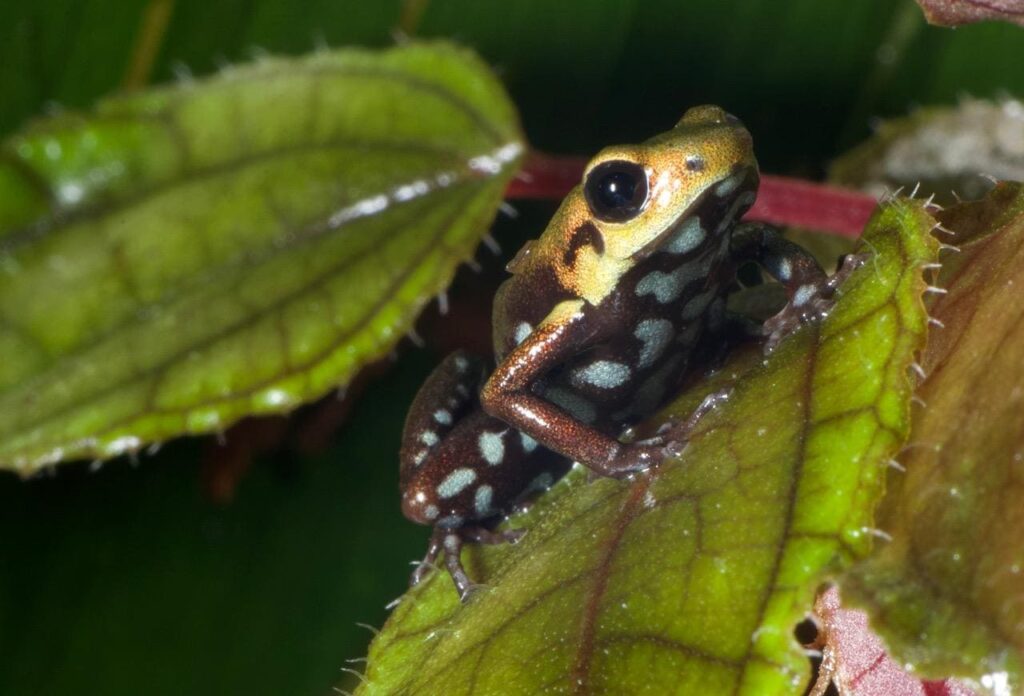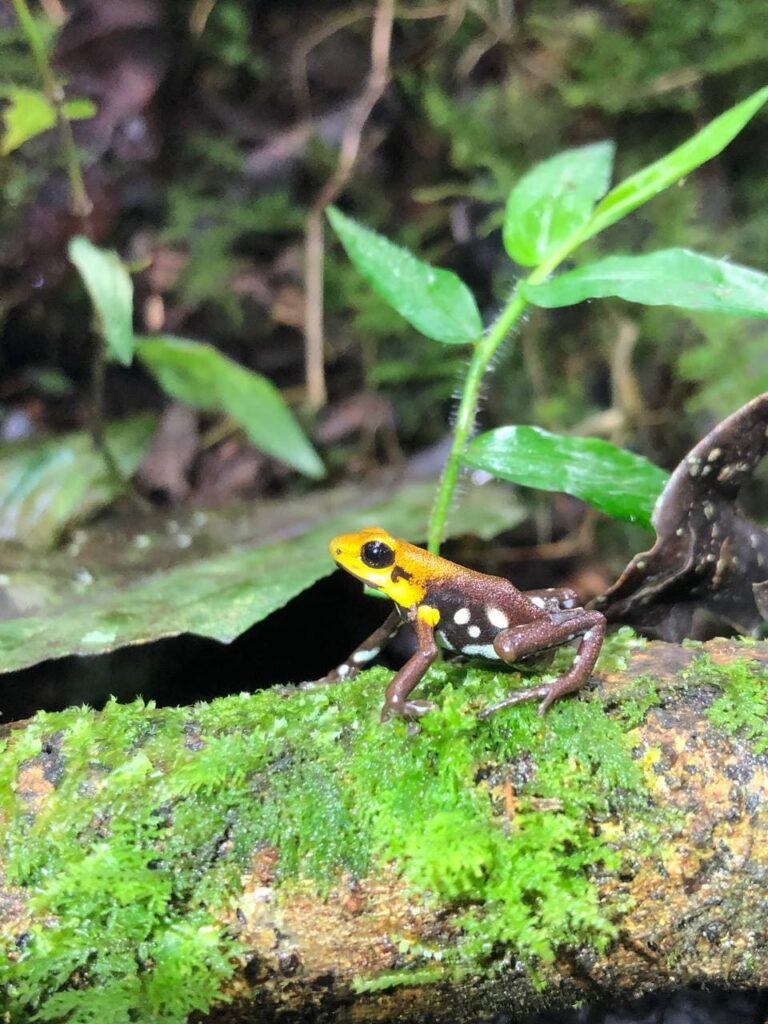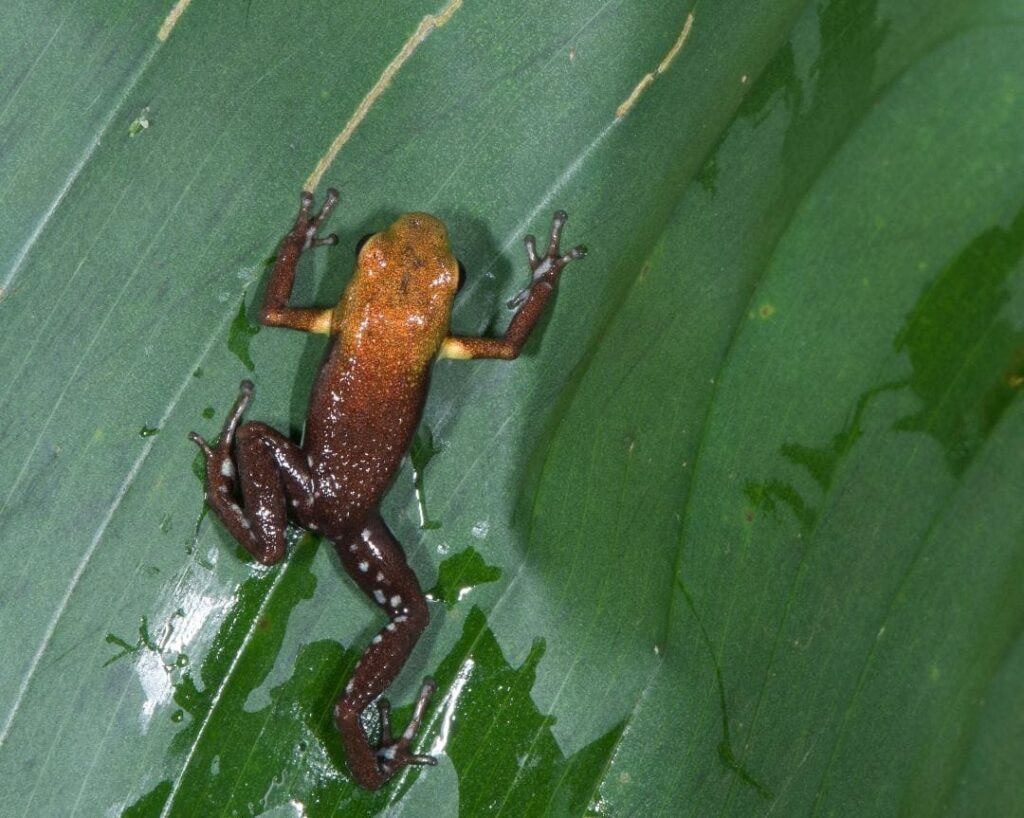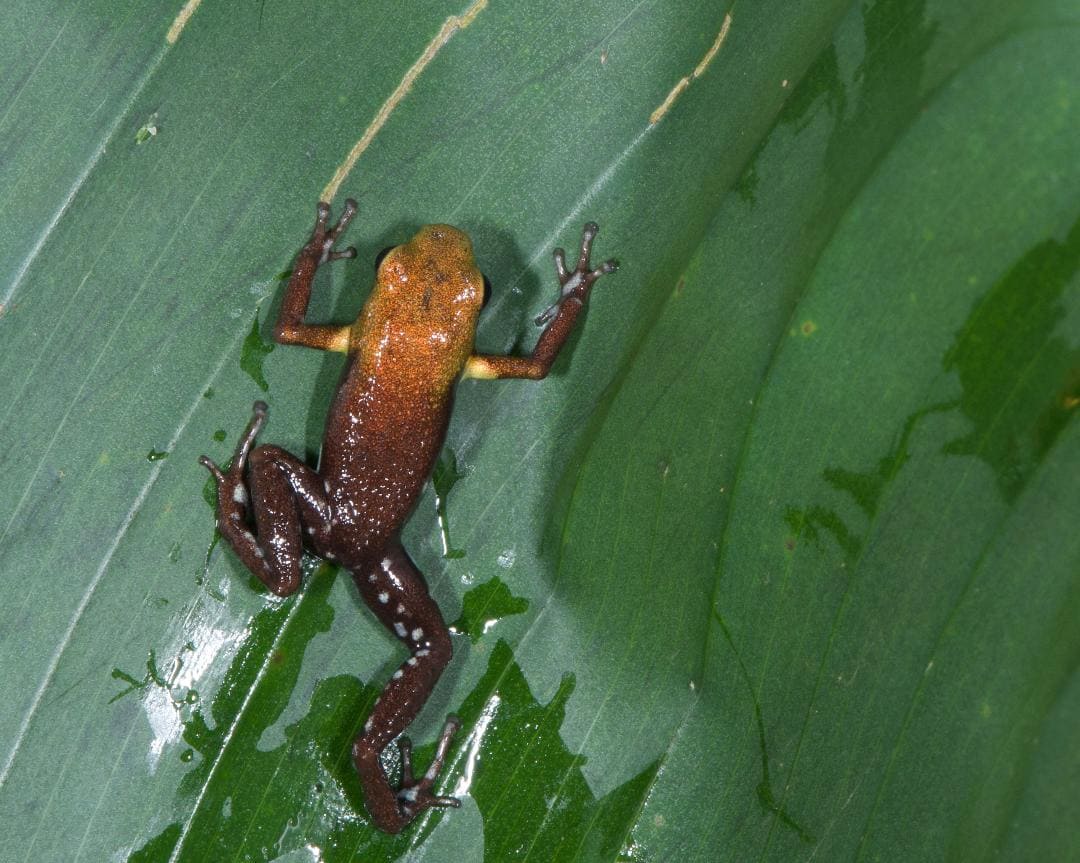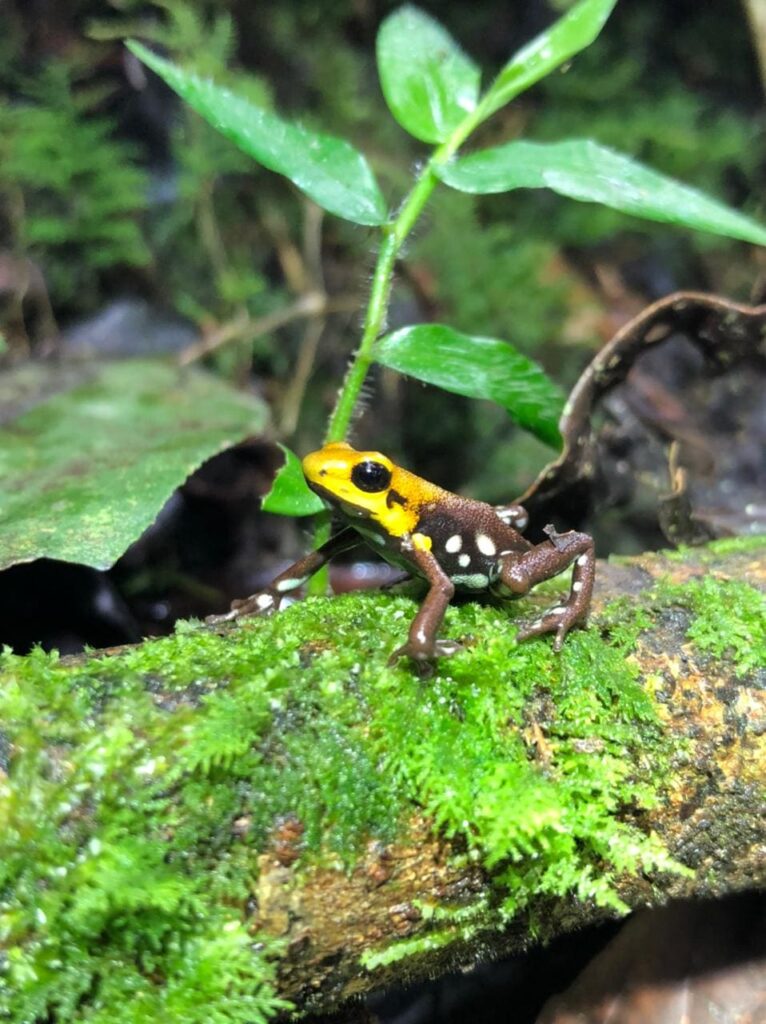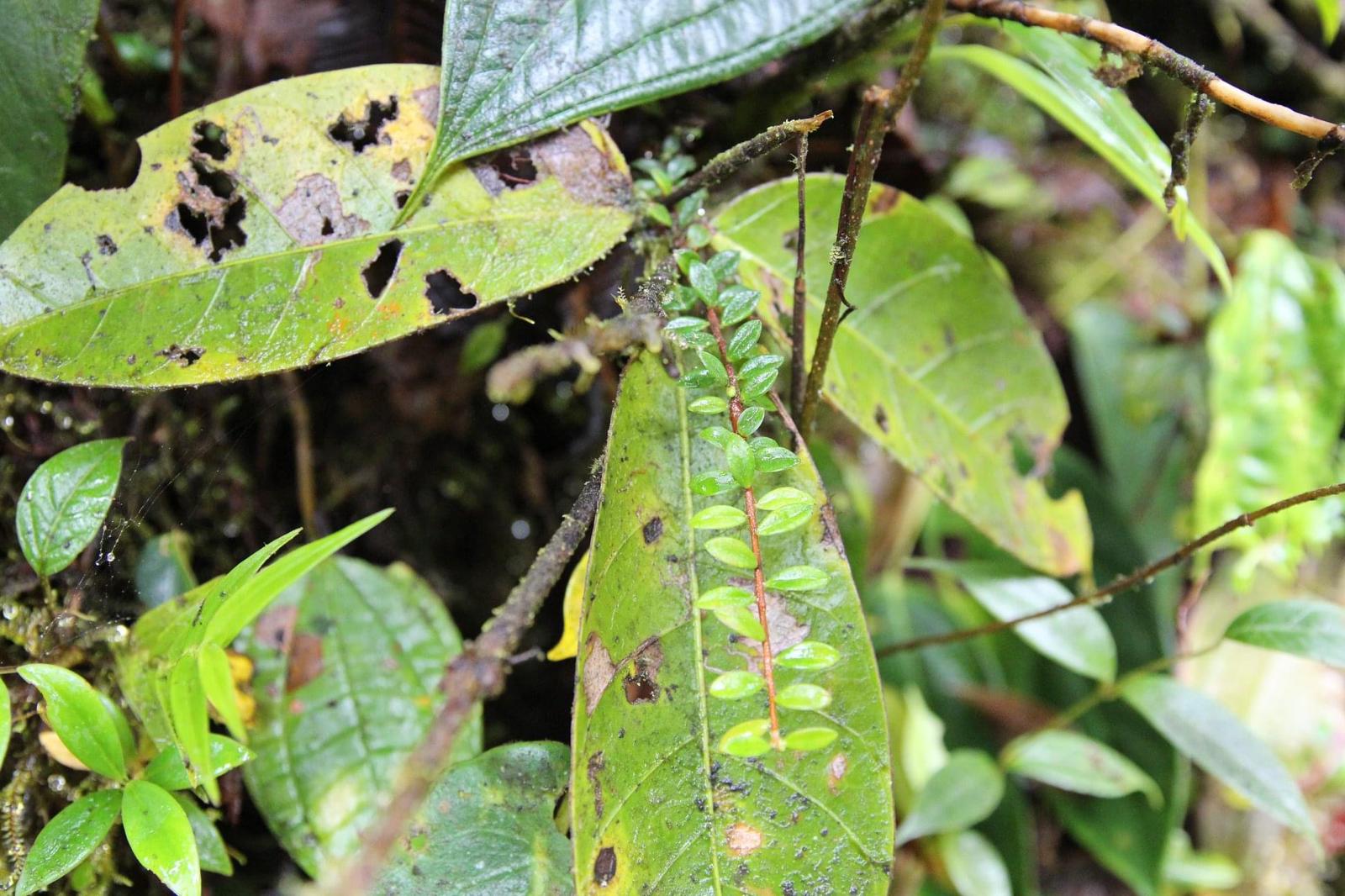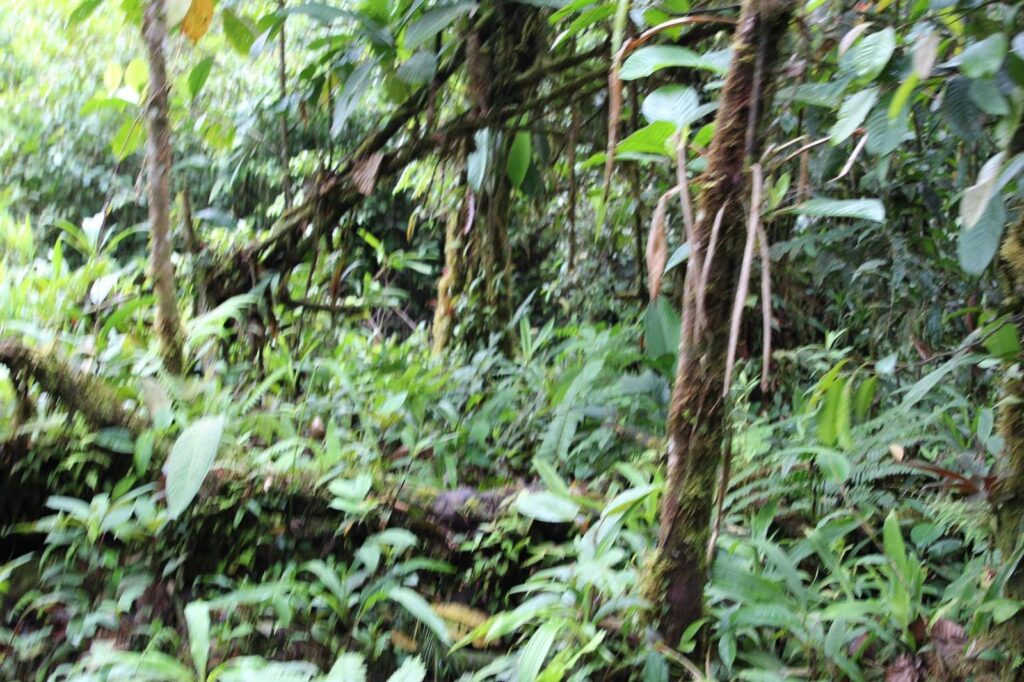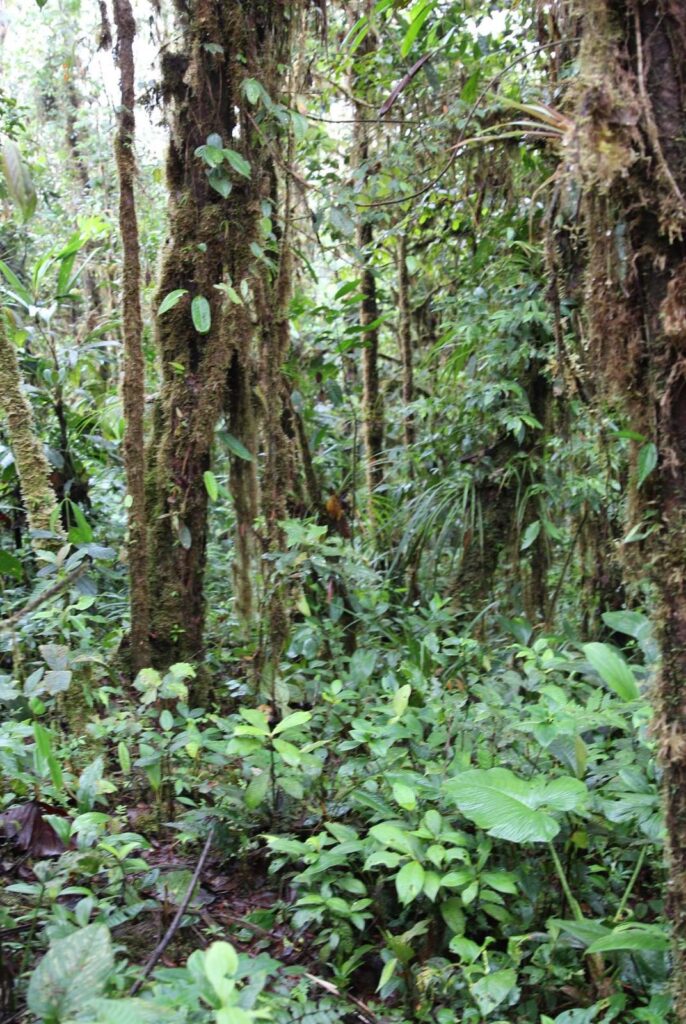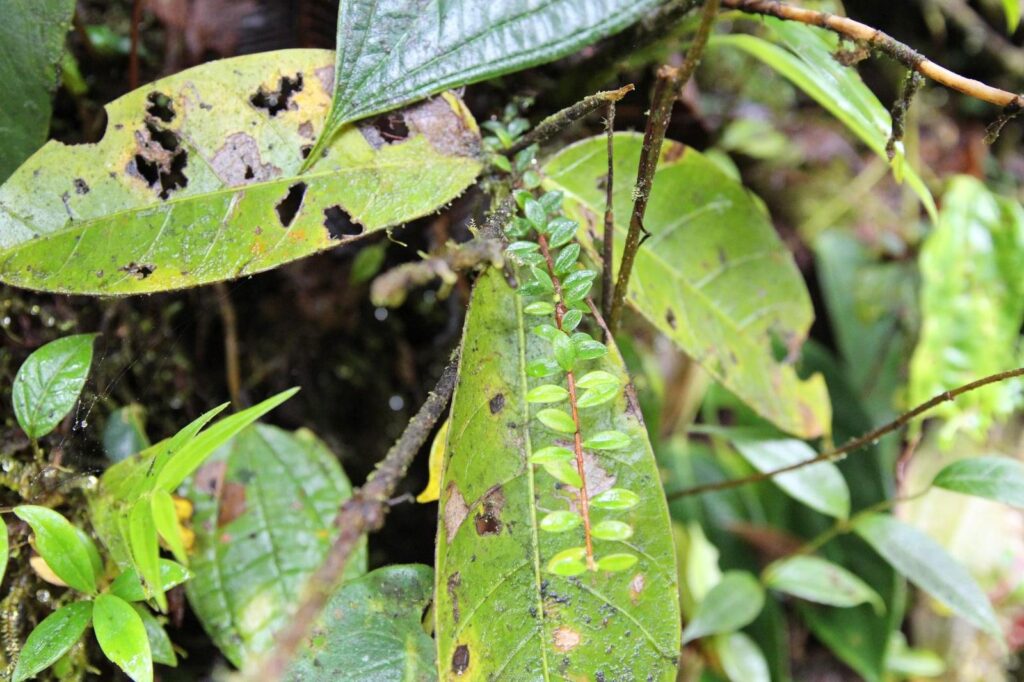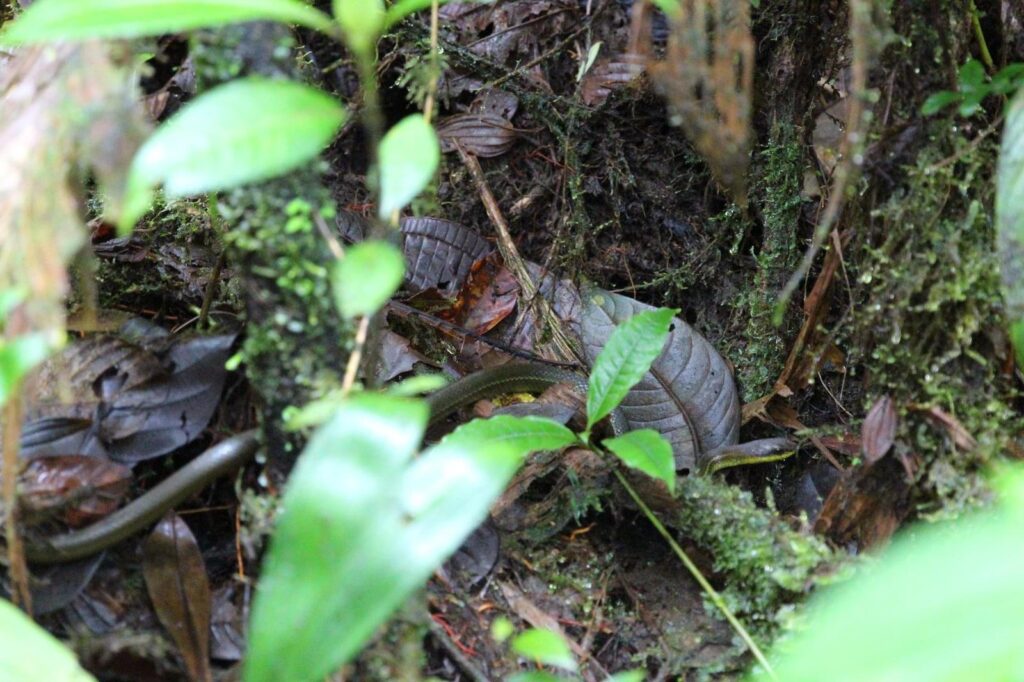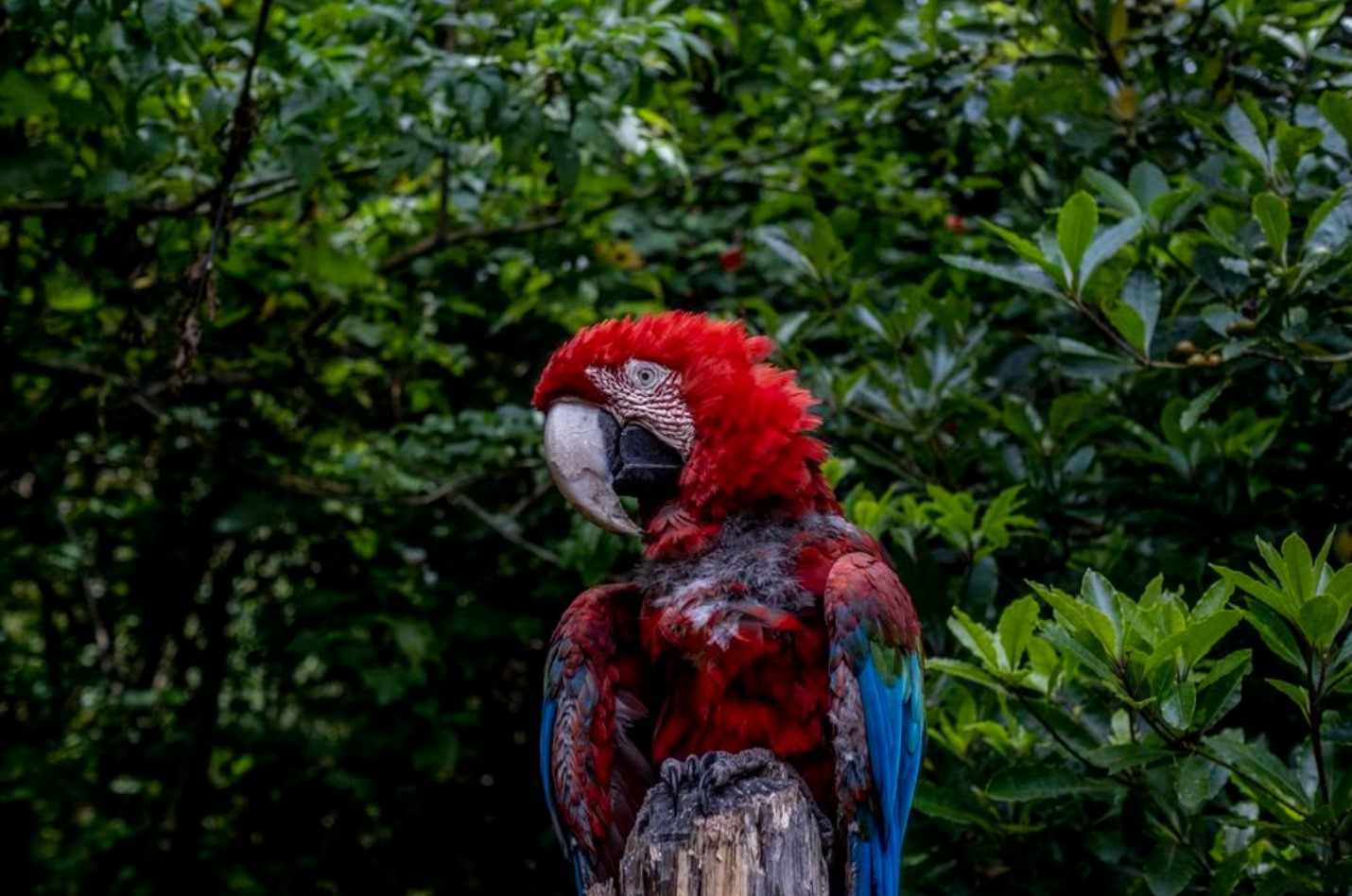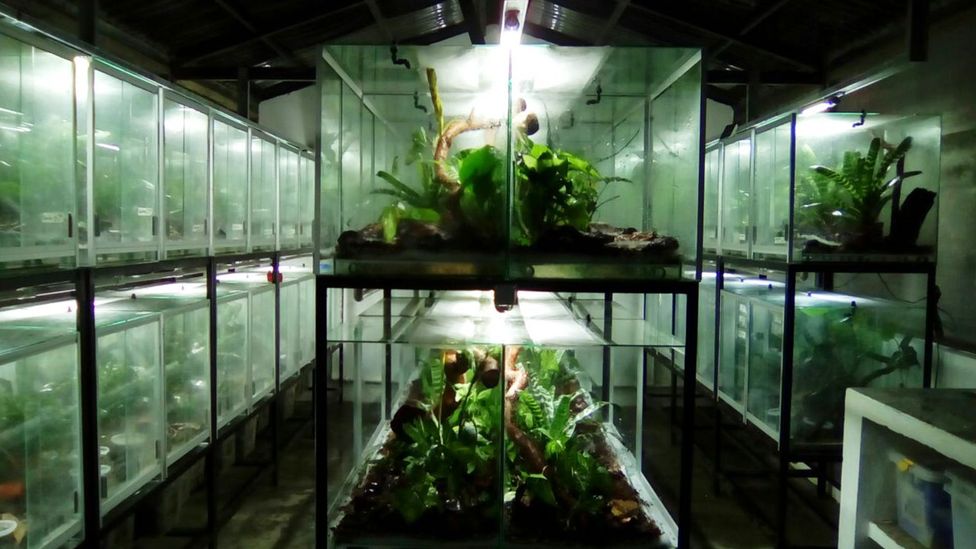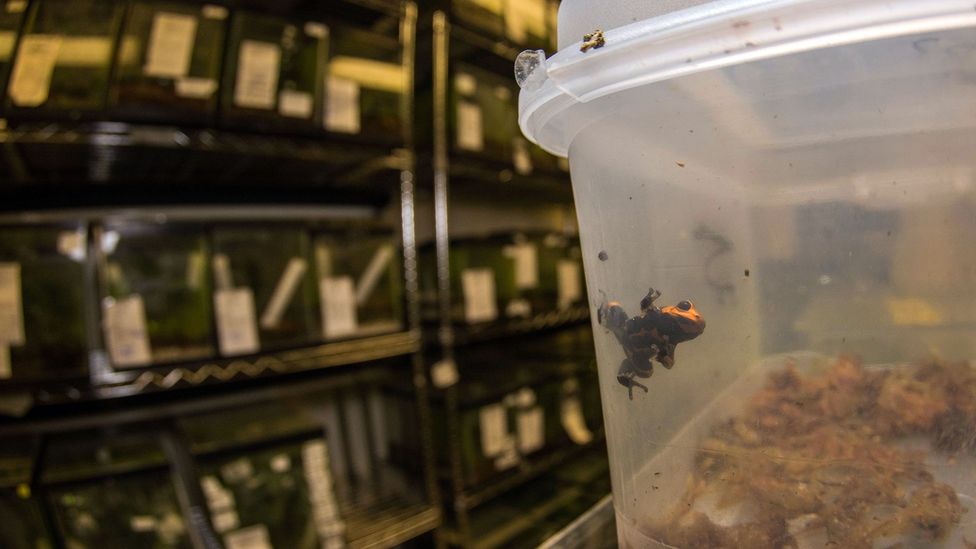Tesoros de Colombia, con la autorización de la Autoridad Nacional de Licencias Ambientales (ANLA), avanza en la fase de experimentación para la reproducción en cautiverio de este anfibio del género Andinobates, que se encuentra En Peligro Crítico por los daños ambientales que resiste su hábitat. Este sería el primer paso para lograr, a mediano plazo, la reintroducción de la rana en sus bosques y recuperar poco a poco sus poblaciones.
A comienzos del mes de octubre de 2023, el mundo conoció la Evaluación Mundial de Anfibios para la Lista Roja de Especies Amenazadas de la Unión Internacional para la Conservación de la Naturaleza (UICN), la segunda publicación de su tipo que se redacta en los últimos 20 años.
El documento, publicado en la revista Nature, fue liderado por las organizaciones Re-Wild y Rainforest Trust. Participaron en su elaboración más de mil científicos de todo el mundo y reveló que 2873 especies en los cinco continentes (de un total aproximado de 8 mil existentes), viven bajo algún grado de amenaza. Esta cifra ubica a los anfibios como el grupo de vertebrados en mayor riesgo de extinción en el mundo, seguidos por los tiburones y rayas (37 por ciento), los mamíferos (27 por ciento) y los reptiles (21 por ciento).
Además de entregar muchas cifras y de explicar las causas de un declive angustioso, la investigación ubicó a Colombia como el país del planeta con la mayor cantidad de especies de anfibios en riesgo —320— de un total de ochocientas que habitan en el territorio.
Con el informe en sus manos, la UICN hizo un llamado a “aumentar masivamente” los esfuerzos por la conservación. Y sugirió una movilización de recursos importante para encontrar las especies desaparecidas o perdidas, y aumentar su protección.
Otra de las alternativas planteadas por la organización internacional se concentró en impulsar programas de cría en cautiverio a partir de ejemplares de las especies más afectadas, para reintroducir esos individuos en aquellos ecosistemas que han sido afectados por el cambio climático —con fenómenos como la erosión, las sequías y las alteraciones en la temperatura— o dañados y alterados por el avance de la agricultura y la ganadería, dos actividades que tienen, según lo analizado, el mayor peso en el declive de ranas, sapos, cecilias o salamandras.
Y precisamente esto último —esa cría en cautividad o ex situ— es lo que Tesoros de Colombia está tratando de consolidar con una de las tantas ranas colombianas que podrían desaparecer a corto plazo y que fueron incluidas en el informe global
Se trata de la Andinobates supata, también conocida como rana dorada, que habita en un pequeño reducto de bosque situado a 37 kilómetros de Bogotá, en el municipio de Supatá (Cundinamarca), localidad por la que el anfibio recibió su nombre científico.
Sus bosques han sido talados
La especie fue encontrada hace unos 15 años, pero su descripción, que la llevó oficialmente a hacer parte de los registros de la biodiversidad colombiana, se concretó hasta el 2021.
En su momento, el hallazgo de la rana fue muy celebrado. Sin embargo, al poco tiempo, la alegría dio paso a la inquietud, porque fueron apareciendo investigaciones que tuvieron en cuenta la situación de la especie y la catalogaron como En Peligro Crítico de extinción.
La Andinobates supata, tan pequeña como una almendra y adornada con tonos verdes, amarillos y dorados, se distribuye en un área muy restringida de no más de 5 kilómetros cuadrados, entre los 1800 y los 2000 metros de altitud, donde la actividad humana es alta.
Más del 90% del bosque original donde le gusta refugiarse ha sido talado. Asimismo, las quebradas y ríos que circundan la vegetación reciben considerables descargas de agroquímicos, principalmente de la ganadería, aunque la agricultura también aporta a los daños. Estas actividades productivas no solo afectan a los individuos directamente, sino además acaban con bromelias y otras plantas donde la rana habita y logra reproducirse.
Un hogar tan pequeño y rodeado de tantas amenazas hacen que su vulnerabilidad aumente día tras día.
La rana también es atacada por el tráfico ilegal de fauna, liderado por personas que se encargan de extraer ilegalmente ejemplares del medio natural, para venderlos y llevarlos al exterior.
Freno al tráfico y reintroducción de ejemplares
Para mitigar la situación, se han propuesto campañas de educación ambiental para rescatar a la rana dorada. Incluso, en Supatá, la comunidad ha comenzado a conocerla y cuidarla como un símbolo local, al punto de que fue construido un monumento en su honor en el parque principal del municipio y anualmente se hace un festival para resaltar su existencia apoyado por varias instituciones públicas y organismos privados. (Ver Figura 1)
Figura 1. Póster del Festival de la rana de Supatá 2023
Pero, Tesoros de Colombia está trabajando en la consolidación de un aporte más científico y sostenible. Hoy, con el permiso de la Autoridad Nacional de Licencias Ambientales (ANLA) y de la Corporación Autónoma Regional de Cundinamarca (CAR), avanza en una fase de experimentación para perfeccionar la reproducción de la rana bajo cuidado profesional y experto, a partir de unos pocos ejemplares, llamados parentales, que fueron legalmente obtenidos de la vida silvestre.
A partir de este trabajo, y cuando el nacimiento de las crías sea perfeccionado, Tesoros de Colombia haría dos labores encaminadas a su conservación: de una parte y buscando disminuir la presión sobre las poblaciones naturales, exportaría a algunos de esos individuos de la rana dorada, frenando el tráfico ilegal de la especie al sustituir la demanda.
Esto último, que es una fase comercial que también debe ser autorizada por la ANLA, se transformaría en una oferta legal, obtenida con sostenibilidad, que produce un efecto dominó a favor del anfibio: porque se reduce el precio que se paga en el exterior por cada ejemplar, los acuaristas o coleccionistas pueden obtener individuos sanos y adaptados desde su nacimiento al cuidado humano sin acudir al mercado negro y el ‘negocio’ de quienes esperan traficarla pierde fuerza, en la medida en que comienza a existir una oferta autorizada que le cierra la puerta al tráfico y lo deja sin sustento.
Incluso, como al exterior llegan parejas (hembra y macho), no se descarta que al poco tiempo las mismas entidades o coleccionistas puedan lograr sus propios procesos de reproducción.
Obviamente, todo lo anterior es una actividad que genera recursos económicos, necesarios para mantener el funcionamiento de las instalaciones donde se crían los anfibios. Y se convierte en una alternativa laboral que diversifica la economía y genera empleos.
Esto incluye un paso adicional que es donde la rana puede obtener un beneficio definitivo: por liderar este proceso de reproducción, Tesoros de Colombia debe realizar, en el lugar en donde se hicieron las primeras colectas —o en otras zonas de Supatá previamente acordadas con las comunidades y la CAR—, un repoblamiento de ejemplares de la rana dorada, que podrían ser la base para una recuperación a largo plazo.
De alguna manera, este paso a paso, que es a su vez un proyecto de conservación y de generación de conocimiento, podría explicarse diciendo que el Estado colombiano le confía, a manera de préstamo, una serie de especies a un grupo de expertos para que ellos las reproduzcan y no se extingan, una práctica usual en muchos países del mundo e incluso avalada por la Conferencia de las Naciones Unidas sobre Comercio y Desarrollo (UNCTAD, por sus siglas en inglés), órgano que fomenta las transacciones y las inversiones en flora y fauna en países en desarrollo, incluidas aquellas que tienen que ver con recursos genéticos, asegurando al mismo tiempo su cuidado y mejoramiento a largo plazo.
Tesoros de Colombia ya cumple con todas las fases descritas anteriormente —reproducción, comercio y apoyo a las especies en el terreno— con diez especies de ranas colombianas, todas en situación de amenaza, entre las que aparecen Dendrobates truncatus, Dendrobates terribilis, Oophaga histrionica y Oophaga lehmanni. Y ahora está siendo respaldada por la organización Active Conservation Alliance (ACA), con sede en Estados Unidos, interesada en concretar proyectos dirigidos a crear zonas de conservación privadas, para la preservación de la Andinobates supata y de otras especies de anfibios colombianos.
Dice Iván Lozano, conservacionista y zootecnista de la Universidad de la Salle, que todo ese esfuerzo científico debería ser complementado por iniciativas urgentes de educación ambiental y restauración de áreas estratégicas que permitan que la rana de Supatá comience a recuperar su hogar natural.
